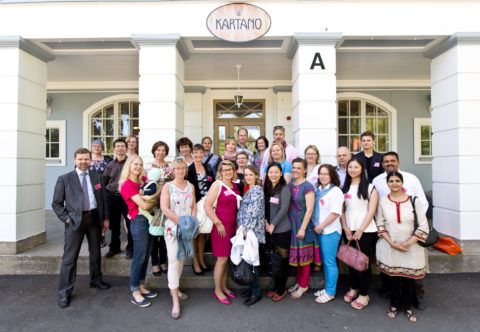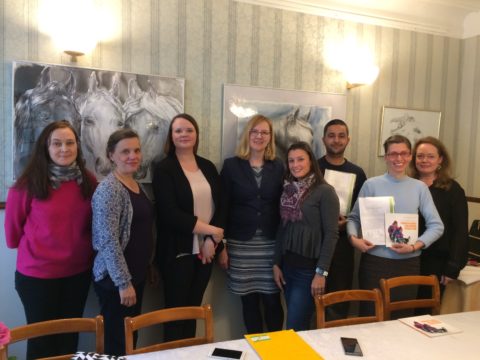Learning from Finnish education: What, How and Why?
We get inquiries concerning Finnish education every day. People from all over the world are curious to learn, what is Finland doing differently in education and why are we getting so excellent results.
This is all very nice and flattering. We are happy to share our ideas and experiences. The problem is, how these ideas could be best conveyed.
I once had a discussion with a foreign gentleman, who happens to be one of the top politicians of his country. He looked me deep in the eyes and asked. “What is the secret of Finnish education? Tell me why you are getting such outstanding results!” The problem was, he was expecting three-bullet-points-kind-of-answer. If it was that simple, I’m sure every country would have adopted those three principles a long time ago.
When we are revealing the “secrets” of Finnish education, we always concentrate on three different perspectives: what, how and why.
“What”
 means telling about the Finnish education system, structure, principles and contents. Even this “what” brings foreign teachers often a lot of new inspiration and ideas. Finland is in many aspects doing something else than the most of the world. Just recently my colleague was travelling abroad and telling about guidance and couselling system we have in Finnish education and the audience was astonished. This week I had the privilege to host an international expert that was overwhelmed by the craft education in Finnish basic education (for instance all Finnish children learn how to use the tools and different kind of machinery in woodwork etc.). The participants of our early childhood education study tour in May were awestruck by the mediating and negotiating programs our four and five years old learn in kindergarten etc.
means telling about the Finnish education system, structure, principles and contents. Even this “what” brings foreign teachers often a lot of new inspiration and ideas. Finland is in many aspects doing something else than the most of the world. Just recently my colleague was travelling abroad and telling about guidance and couselling system we have in Finnish education and the audience was astonished. This week I had the privilege to host an international expert that was overwhelmed by the craft education in Finnish basic education (for instance all Finnish children learn how to use the tools and different kind of machinery in woodwork etc.). The participants of our early childhood education study tour in May were awestruck by the mediating and negotiating programs our four and five years old learn in kindergarten etc.
As much as many people think this “what” is enough to grasp “the secret of Finnish education”, it’s actually not. It is imperative to understand
“How”
these different contents are delivered and these educational arrangements carried out in practice. It is essential to see yourself, how the teaching and learning is organized, how the evaluation is carried out and how do we organize the various forms of support etc.
If you are visiting Finnish schools it is easy to witness these things yourself. If we are training the foreign teachers abroad, we have videos and other practical examples to show how the everyday work in Finnish schools is organized. Furthermore we always try to give foreign teachers first-hand experiences of the teaching and learning methods frequently used in Finnish schools, no matter if we are in Finland or abroad.
Many foreign visitors think, that this “what” and “how” can be figured out just by visiting schools and seeing what happens in the classrooms. I wish it was that simple. Of course there are plenty of interesting things in our schools to see: inspiring new learning environments, new ways of teaching and learning, Finnish specialties like free play and sports during the breaks and school days, free school lunches etc. But if you come from a country with high quality education, you might also think, that many of these things seem familiar to you: “What is it really that makes Finland so special?”
We think it is not enough to take visitors to Finnish schools and just say “Observe yourself!” If you don’t know the language, if you can’t understand, what kind of assignments and feedback the teacher is giving to the students, if you don’t comprehend the interaction in the classroom, if you don’t know the curriculum and its goals, if you don’t understand the rationale behind the action, you only pick up the surface and don’t reach the real understanding. We think it is our job to translate, explain and rationalize the action to our visitors. Make sense of the “Finnish way”.
In our opinion it is impossible to understand the Finnish education without the
“Why”
 When we train foreign teachers or host study tour participants, we constantly try to explain why we are doing certain things in Finnish education: what is the reasoning behind different actions, what is the goal and purpose of doing certain things in a certain way, what kind of scientific principles are behind different activities or practices etc. Only combining the underlying values and principles, objectives and means, it is possible to truly understand the Finnish education miracle.
When we train foreign teachers or host study tour participants, we constantly try to explain why we are doing certain things in Finnish education: what is the reasoning behind different actions, what is the goal and purpose of doing certain things in a certain way, what kind of scientific principles are behind different activities or practices etc. Only combining the underlying values and principles, objectives and means, it is possible to truly understand the Finnish education miracle.
We always hope, that Finnish education practices could be of inspiration to foreign educators around the world. The practices might not always be transferred as such, but they can be applied to new systems and cultures in a new way. In order to do so, you first have to understand both what, how and why. One of our visitors put it well: “The combination of theory and practice proved to be very useful during the study tour. For example, each day the group visited schools in the morning and attended conferences and discussions in the afternoon. This merger between theoretical and practical activities helped us to better understand the phenomena in Finnish education. – I appreciate very much your professionalism and pedagogical ethos. You do an impeccable work!”
Sincerely,
Johanna
